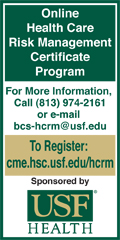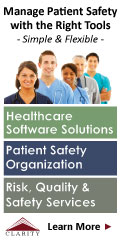 |
 |
 |

March / April 2006
Evidence-Based Medicine in the Pharmacy

By Jim Davidson, RPh; Kavita V. Nair, PhD;

Robert J. Valuck, RPh, PhD;

Gina Moore, PharmD, MBA
 U.S. aphorist Mason Cooley said, "Theory can leave questions unanswered, but practice has to come up with something." Nowhere does this apply better than the increasingly prevalent practice of evidence-based medicine (EBM). For while everyone believes EBM makes sense theoretically, only a few organizations have actually found a practical way to implement it. Jefferson Memorial Hospital in Crystal City, Missouri, is one of those few. U.S. aphorist Mason Cooley said, "Theory can leave questions unanswered, but practice has to come up with something." Nowhere does this apply better than the increasingly prevalent practice of evidence-based medicine (EBM). For while everyone believes EBM makes sense theoretically, only a few organizations have actually found a practical way to implement it. Jefferson Memorial Hospital in Crystal City, Missouri, is one of those few.
For more than 40 years, Jefferson Memorial Hospital has stayed true to its original goal to provide quality healthcare conveniently to the people of Jefferson County and surrounding communities. Licensed for 226 beds, the hospital's five-story structure and surrounding campus feature a home care/hospice center, two medical office centers, an oncology center, the Deles Heart and Cardiovascular Center, and the Crystal Oaks Complex, which includes residential care and skilled nursing facilities. Recent expansion has included an outpatient imaging center, wound care center, and women's health center. A geriatric psych facility will open in the spring of 2006. Located 30-plus miles from St. Louis, in the Twin Cities area, the hospital employs nearly 1,500 people, including more than 170 physicians and specialists — and it continues to grow.
EBM: What It Is, What It Takes
In recent years, EBM has become the holy grail of healthcare delivery, valued for its ability to reduce medical error and healthcare costs. The most common definition of EBM is taken from Dr. David Sackett: "... the conscientious, explicit and judicious use of current best evidence in making decisions about the care of the individual patient. It means integrating individual clinical expertise with the best available external clinical evidence from systematic research (1996)."
For pharmacists, "evidence" is drug data — what the drugs are, how they are used, how they interact with other drugs, and the latest best practice treatment recommendations for common and uncommon conditions. And pharmacists believe this data is critical to their practice. In a recent survey of pharmacists, 90% held positive attitudes toward EBM and 84% thought research findings were important to daily practice (Burkiewicz & Zgarrick, 2005). Unfortunately, positive opinions are not enough.
Not surprisingly, lack of time is the biggest obstacle to EBM use (Burkiewicz & Zgarrick, 2005). To practice it, pharmacists must stay abreast of the most up-to-date information on drug therapy, comprising more than 600 new articles each week (Felkey & Fox, 2003). Other obstacles include physician attitudes toward pharmacist recommendations and access to resources (Burkiewicz & Zgarrick, 2005).
For pharmacists, quality drug knowledge resources, optimally integrated into clinical workflow, enable EBM. These resources constitute two types of information (Micromedex, in press):
- Reference information. Drug reference information should answer specific questions about a wide range of drugs, including FDA-approved and investigational prescription, and non-prescription drugs, non-U.S. preparations and complementary and alternative medications. The information should be easy to understand and consistent for the full spectrum of users — from clinicians to patients.

- Proactive information. Targeted patient-specific alerts can notify clinicians of potential medication use problems of which they might not otherwise be aware. Optimally, the guidance should be delivered via the most appropriate channel at the most appropriate point in the clinician's workflow (e.g., via computerized work-flow tools for pharmacists, computerized physician order entry [CPOE] for physicians, and medication administration systems for nurses).
To facilitate EBM, drug databases must be accurate and reliable; comprehensive; timely, updated frequently; and consistent for all stakeholders throughout the medication use cycle. Using these criteria, Jefferson Memorial selected a database solution in 2002.
Drug Data on Demand
Jefferson Memorial Hospital's new computerized drug database gives pharmacists evidence-based documents covering FDA-approved and investigational prescription and nonprescription drugs, as well as non-U.S. preparations. The database provided information on dosage, pharmacokinetics, cautions, interactions, clinical applications, adverse effects, comparative efficacy, drug of choice information, and orphan drug status. The hospital also installed a system to provide easy-to-understand drug education to patients.
Jefferson Memorial was not using an integrated information system, but the drug database was available on the same desktop for quick reference. The database was integrated into the hospital's Intranet so nurses, pharmacists, and physicians could look up information on any desktop in the hospital with Internet access.
Typically, a pharmacist identifies a need for intervention (e.g. non-formulary drug request, dose calculation, etc.) and searches the appropriate databases for evidence-based documentation the prescriber should consider. The databases are also available to pharmacists on their handheld devices for easy access when they are not at a network workstation.
Currently, pharmacists communicate with physicians via a communications form in the chart or a telephone call. The hospital is implementing an integrated information solution with a CPOE function that will allow pharmacists to communicate electronically with physicians.
In conjunction with the University of Colorado Health Sciences Center School of Pharmacy, Jefferson Memorial surveyed its pharmacists about their use of the database. They reported using it most often for:
- Pediatric dosing, drug interactions, and routes of administration

- Patient-specific dosing calculators

- Toxicology nomograms

- Drug identification

- Drug information inquiries, including referenced studies if needed for more detail

- Therapeutic interchange and drug comparison

- Off-label use information

- Acute care information

- Disease state management
Table 1 summarizes the survey's findings.
| |
Pharmacy |
Nursing |
| PRIMARY DATABASE USE |
Pediatric dosing, drug interactions and routes of administration
Patient-specific dosing calculators
Toxicology nomograms.
Drug information, including referenced studies
Used for therapeutic interchange
Drug comparison
Off-label use information
Acute care information
Disease management information
|
Patient discharge instructions
Medication administration
Primary drug reference
Teaching drug therapy to nursing students and nurses
|
| PRIMARY OPINIONS |
Allows pharmacists to provides information quickly to physicians at bedside
Provides optimum amount of information
The "pharmacist's secret weapon"
|
Accurate
Easy to update
24 hour access
Provides customized patient discharge instructions
Faster to use than paper-based sources
|
| Source: University of Colorado Health Sciences Center and Micromedex |

|
 |
 |
 |


















|
 |

